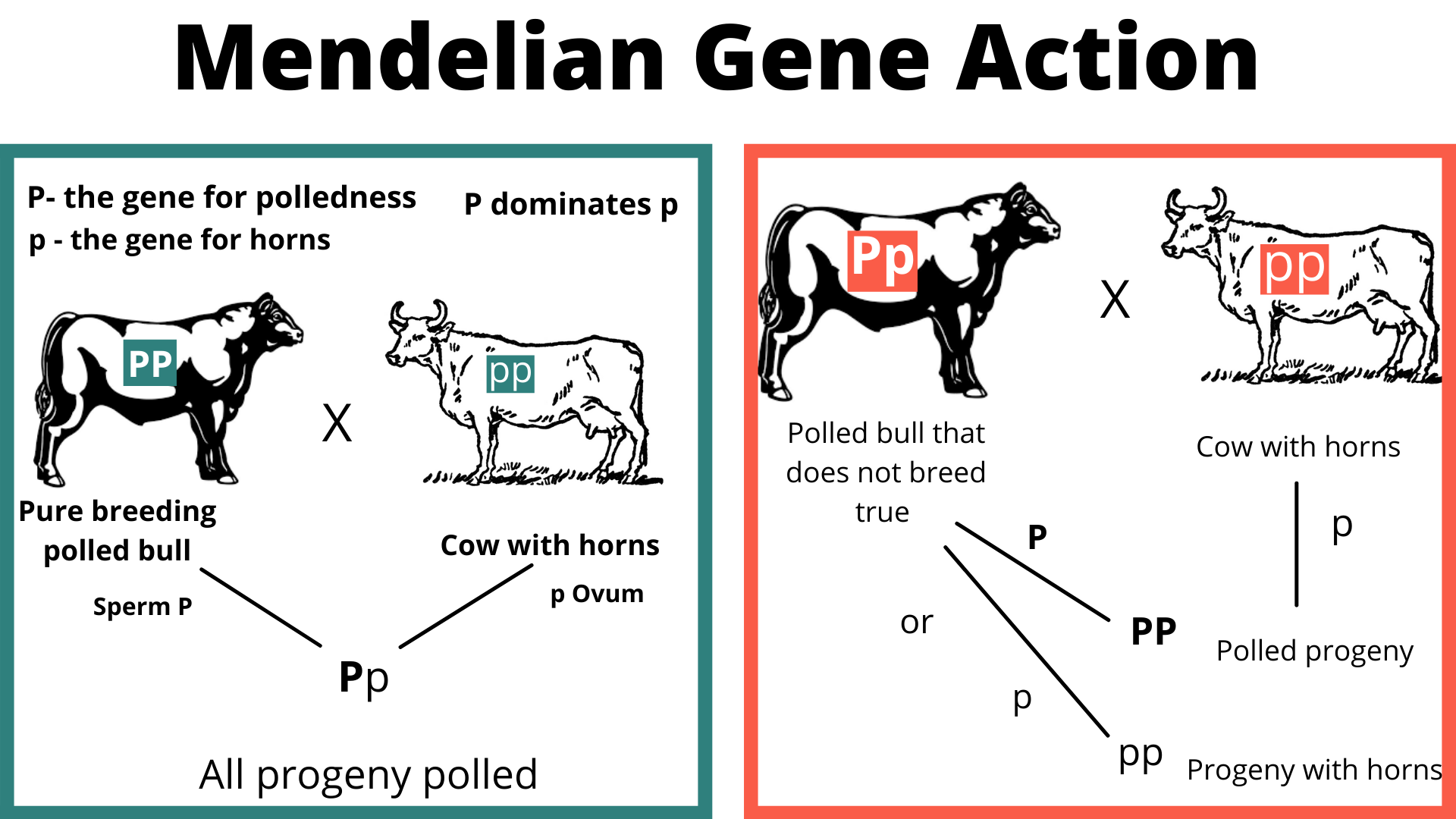Interpretations of Mendel’s single gene inheritance (the experiments were done with peas. Therefore, the male gametes are pollen and female gametes are egg cells)
Interpretation
Assume that for a given pair of alternative characters, F1 individuals have received an appropriate genetic element from each parent. That will be the contribution of each gamete. Let X be the element representing the character that is expressed in the F1, and x be the element that is the basis of the character that is not expressed in the F1. The F1 individuals may then be designated Xx. Suppose that the pollen and egg cells, produced by these individuals, contain only one of the elements, X or x, and that these two kinds of elements are represented equally among gametes.
F1 - The first gross offspring of parents.
F2 - Offspring of the possible crosses between F1 individuals.
As a result of fertilization when the male gamete (pollen) joins the female gamete (egg cell) the resultant combinations may be predicated as shown below:
|
|
Pollen (male) X |
x |
|
Egg Cells (female) X |
XX |
Xx |
|
x |
Xx |
xx |
In summarizing, we expect to find F2 combinations of genetic elements in proportion. 1 XX: 2 Xx: 1 xx.
If in the F2 the relationship of element X to x is as it was in the F1, xx individuals can be expected to express the characteristic expressed in F1 individuals. This means that in the F2 one expects XX and Xx individuals to show the same characteristics and xx individuals to show the alternative. F2 individuals are then expected to occur in a proportion of three (1XX + 2Xx) to one (1xx) and that is what Mendel found in his experiments.
Terminology
The following basic concepts are important:
A unit of heredity, for example,, the element that controls the stem length in peas, is called a gene.
The members of a pair of such units, like L and I controlling the long-short,, stemmed alternative, are called alleles.
One (or very few) pair of genes with a large effect controls the Mendel inheritance of traits. We called these traits or characteristics qualitative or single gene traits. They have a characteristic, easily recognizable, that can be identified as either a dominant or a recessive characteristic, or each gene expresses a part of the characteristic’s expression.
Dominance is where a gene’s influence will show (it does not matter if one or both dominant genes are present) it will be expressed in its offspring. Recessive genes can be obscured by the presence of the dominant gene.
The Gene Theory of Heredity
Single gene heredity was the first clear experiment in the early years of the development of the theory of inheritance. That was because the environment does not influence this kind of inheritance. Morgan, a well-known investigator of Mendel’s theories, and his team put the facts together into a theory. This is known as the gene theory of heredity and can be summarized as follow:
- Hereditary traits are determined by tiny particles called genes.
- These particles are transmitted from one generation to the next during the process of reproduction.
- The genes are strung in single files along the length of nuclear structures called chromosomes.
- Each gene has a definite position, or locus, on the chromosome in which it resides.
- The gene, at a given locus on a chromosome, may take one of several different (allelic) forms.
- Each gamete has a complete set of genes carried in a single set of chromosomes (monoploid/haploid).
- When two gametes unite, the resulting zygote received two complete sets of chromosomes carrying two complete sets of genes (diploid).
- When the zygote develops into an organism, each cell receives two complete sets of chromosomes carrying two complete sets of genes.
- The interaction of the two sets of genes contained in each cell determines the characteristics which show in the organism.
- When this new organism produces gametes, reduction division (meiosis) causes the paired chromosomes to separate, so that only one member of each pair goes to anyone gamete.
- This separation of chromosomes provides the mechanism by which allelic genes are separated from one another.
- Since each gene always retains its own identity, allelic genes separate in pure form.
- Chance determines how gametes unite to produce the next generation. Therefore, it is chance that determines the recombination of the segregated genes.
- The recombination of genes by chance results in various ratios (Mendel), such as the 3: 1 ratio.
The gene theory explains the way in which genes are carried over from one generation to the next; that is the mechanism of this process. What the gene really is is that its biochemical composition and bio-chemical action first became clear by virtue of research done after 1950 and with which people are still busy.
- P = Gene for cattle without horns
- p = Gene for horns
- P is dominant over p

Monozygotic = both the gametes have the same genes.
Heterozygote = Half of the gametes have the dominant gene while the other half has the recessive gene.